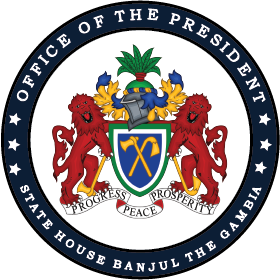MAIN OBJECTIVE
The Fisheries and Aquaculture Sector Strategy 2017-2021 aims to transform The Gambia's fisheries and aquaculture sector into a critical pillar of national economic growth. The focus is on sustainable resource management, enhancing food and nutrition security, creating employment, and increasing foreign exchange earnings.
Specific Objectives
-
Restructure and Strengthen Institutions: Transform the Department of Fisheries into a National Fisheries Commission with enhanced operational capacity.
-
Sustainable Resource Management: Implement measures to conserve fisheries resources and ensure ecological sustainability.
-
Capacity Building: Enhance technical and operational capacity across stakeholders.
-
Increase Private Sector Investment: Facilitate investment opportunities in fish processing, packaging, and marketing.
-
Gender Equality and Poverty Alleviation: Empower women and youths as major players in the sector.
-
Develop Aquaculture: Expand aquaculture initiatives for food security and economic growth.
-
Optimize Value Chains: Strengthen linkages with other sectors like tourism and manufacturing.
SUMMARY
The Fisheries and Aquaculture Sector Strategy 2017-2021 outlines a comprehensive plan to maximize the socio-economic potential of fisheries and aquaculture resources in The Gambia. It addresses challenges such as limited infrastructure, insufficient territorial water policing, and gendered poverty while emphasizing sustainable practices.
The strategy is structured around five pillars:
-
Institutional restructuring and capacity building.
-
Legal and policy reforms to align with international standards.
-
Stakeholder capacity building and sensitization.
-
Value chain optimization through inter-sectoral collaboration.
-
Strategic partnerships with local and international stakeholders.
Specific targets include increasing the sector's contribution to GDP to 5%, boosting employment by 25%, and securing 15% of foreign exchange earnings by 2021. The plan highlights the importance of investing in infrastructure, engaging communities, addressing climate change impacts, and empowering women in the fisheries sector.
The document envisions transforming the fisheries and aquaculture sector into one of the top three contributors to The Gambia's economic growth, achieving sustainability, inclusivity, and resilience.
-
Ministry of Public Service
7 documents -
Office of The Vice President
3 documents -
Ministry of Agriculture, Livestock and Food Security
8 documents -
Ministry of Basic and Secondary Education
2 documents -
Ministry of Defence
3 documents -
Ministry of Environment, Climate Change and Natural Resources
9 documents -
Ministry of Finance and Economic Affairs
11 documents -
Ministry of Foreign Affairs and International Cooperation
2 documents -
Ministry of Health
30 documents -
Ministry of Higher Education, Research, Science and Technology
3 documents -
Ministry of Communications and Digital Economy
24 documents -
Ministry of Interior
3 documents -
Ministry of Justice
1 document -
Ministry of Petroleum and Energy
5 documents -
Ministry of Trade Industry and Employment
8 documents -
Ministry of Transport Works and Infrastructure
3 documents -
Ministry of Tourism and Culture
3 documents -
Ministry of Women, Children and Social Welfare
12 documents -
Ministry of Youths and Sports
2 documents -
Ministry of Land and Regional Government
1 document -
Ministry of Fisheries and Water Resources
3 documents -
Office of The President
0 documents

